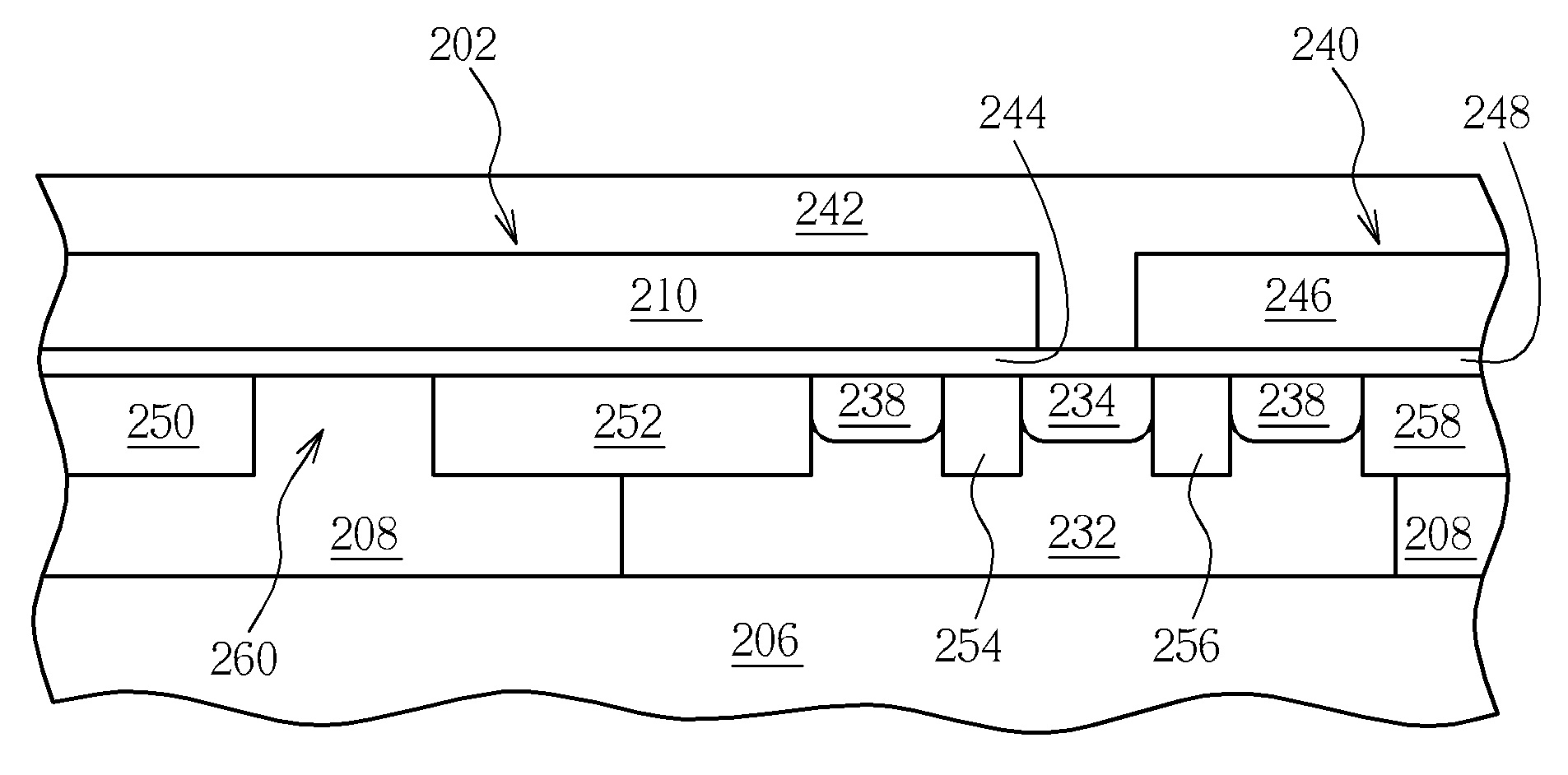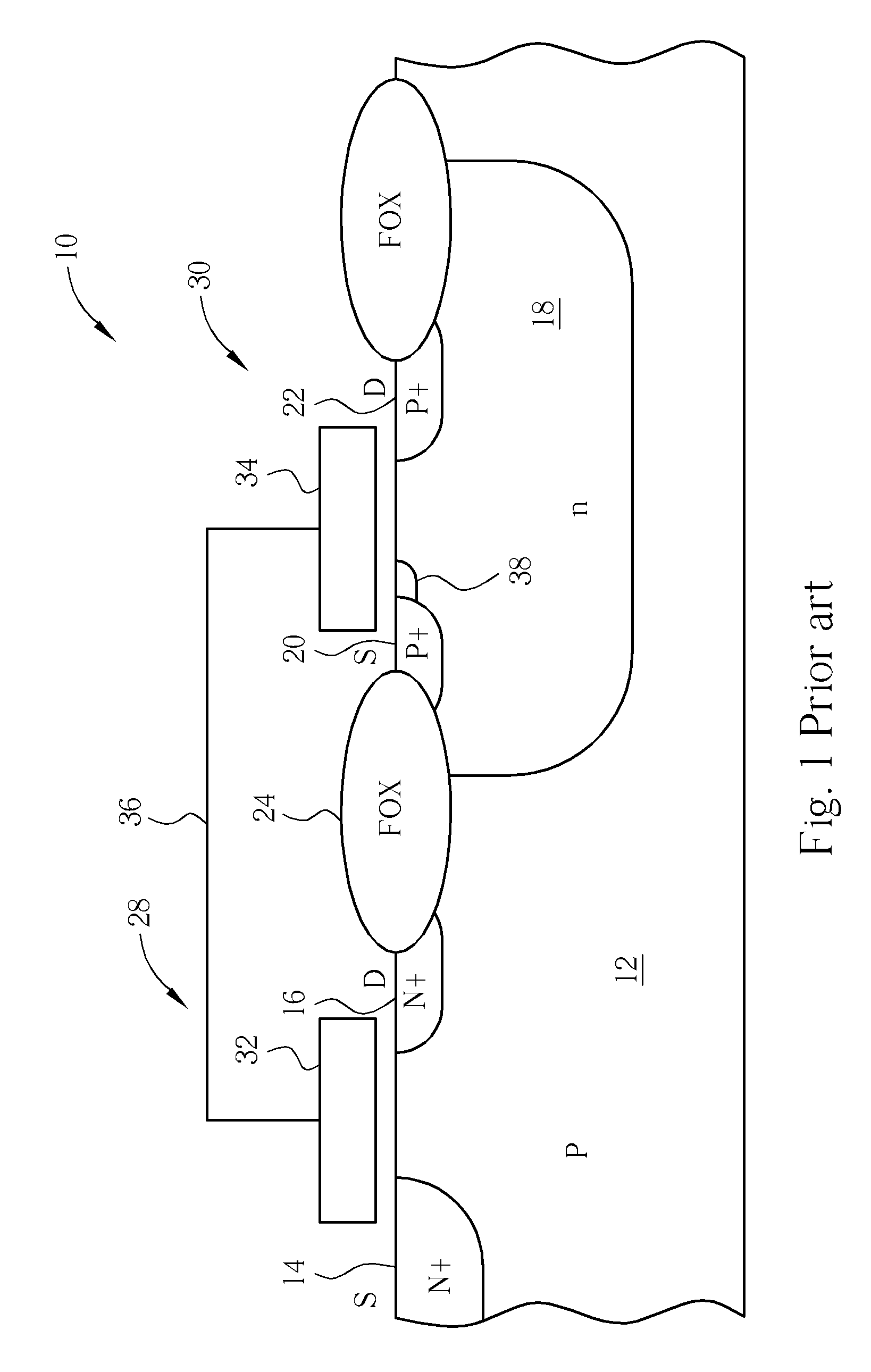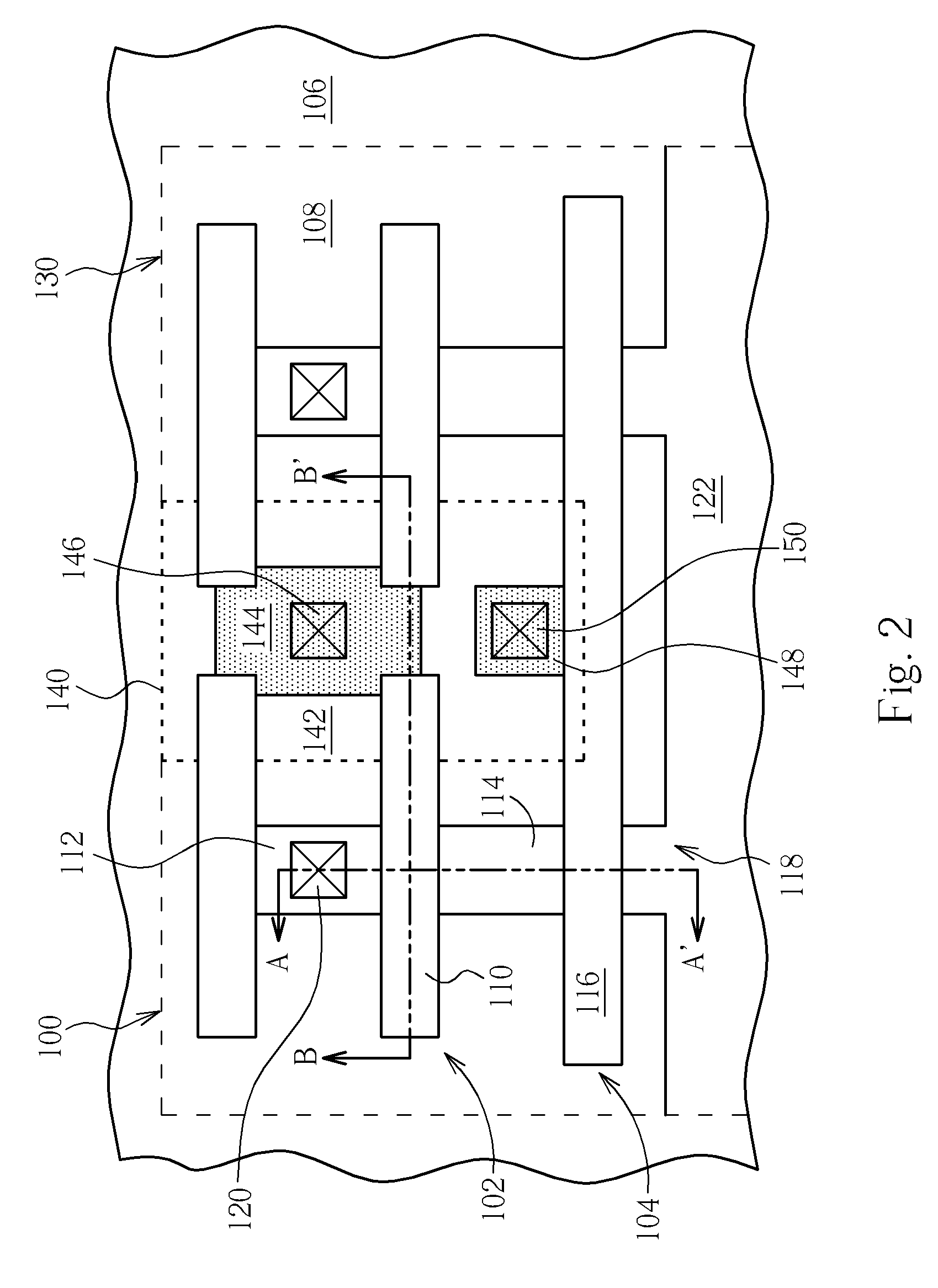Single-poly EEPROM
a single-poly, eeprom technology, applied in the direction of solid-state devices, semiconductor devices, instruments, etc., can solve the problems of increased cost, increased process steps, and several drawbacks of the prior art cell b>10/b>, and achieves increased erasure efficiency, wide process window, and increased voltage difference
- Summary
- Abstract
- Description
- Claims
- Application Information
AI Technical Summary
Benefits of technology
Problems solved by technology
Method used
Image
Examples
Embodiment Construction
[0024]Please refer to FIG. 2. FIG. 2 is a plane view schematically illustrating a partial layout of a single-poly EEPROM according to a first preferred embodiment of the present invention. As shown in FIG. 2, a single-poly EEPROM unit 100 includes a first PMOS transistor 102 and a second PMOS transistor 104 serially connected to the first PMOS transistor 102. The first PMOS transistor 102 and the second PMOS transistor 104 are formed on an N-well 108, as indicated by the dashed line in FIG. 2, of a P type substrate 106. The first PMOS transistor 102 includes a floating gate 110, a first P+ doped drain region 112, and a first P+ doped source region 114. The second PMOS transistor 104 includes a gate 116 and a second P+ doped source region 118, and the first P+ doped source region 114 of the first PMOS transistor 102 serves as a drain of the second PMOS transistor 104, thereby electrically connecting the first PMOS transistor 102 with the second PMOS transistor 104.
[0025]It is underst...
PUM
 Login to View More
Login to View More Abstract
Description
Claims
Application Information
 Login to View More
Login to View More - R&D
- Intellectual Property
- Life Sciences
- Materials
- Tech Scout
- Unparalleled Data Quality
- Higher Quality Content
- 60% Fewer Hallucinations
Browse by: Latest US Patents, China's latest patents, Technical Efficacy Thesaurus, Application Domain, Technology Topic, Popular Technical Reports.
© 2025 PatSnap. All rights reserved.Legal|Privacy policy|Modern Slavery Act Transparency Statement|Sitemap|About US| Contact US: help@patsnap.com



